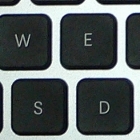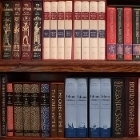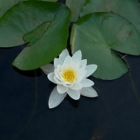







Nathan Richard Bauman
Email: nathan@nathanbauman.com
This webpage is primarily about a taught Literature course. If you are interested in tutoring for speaking, writing, reading, please email me (see the bottom of the page). This "guided tour" through the canon of western civilization concentrates on developing the skills needed to read, interpret, write about, and enjoy literary texts, both in their own right and in terms of how they relate to each other and human intellectual development. The survey of foundational western literary texts in this program begins with the ancient Epic of Gilgamesh and continues right up to the twentieth century. Because Western literary texts rely so much on their place within this tradition, it is important to understand it. It is, however, quite difficult for the modern student to correctly interpret many of the foundational texts. That is where I come in as a guide, for I have had formal university training in the languages and literatures of the ancient Near East and ancient Greece. Helping modern readers to appreciate these ancient difficult texts is something I particularly enjoy, and to this end students of the guided tour will encounter with each lesson an artwork or musical composition that has been inspired by--or is otherwise related to--the text under consideration.
The "Guided Tour" is the privately-offered version of a course I have been teaching for several years to foreign pre-degree Chinese students in the Intercultural Advancement Program, part of the School of Continuing Studies at the University of British Columbia.
The guided tour has as its primary objectives the enabling of students to read, interpret, write about, and enjoy foundational, canonical texts in the western intellectual tradition. If these objectives are met satisfactorily, students should have a good, basic understanding of western culture and intellectual history. In addition, senior high school students and first year university students who have satisfactorily completed the Guided Tour will be intellectually prepared to take the regular university first-year English courses.
I will provide the texts in a course pack for students who enroll in the Guided Tour; it is up to the student (and in some cases the parents), though, to supply the discipline necessary to complete the course. Finally, a reasonable amount of intelligence is required, as is a mind that is curious and clear thinking. A good, healthy brain will help the student to complete the Guided Tour, which will in turn reinforce the health of the student's brain.
The Tour comprises two parts: the introductory unit and the main corpus of texts. An initial lecture begins this first part of the tour; it covers the concepts of genre (prose, poetry, drama; short story, novella, novel), canon, literature, and western. The texts in the introductory unit begin with the only Canadian content in the course, the short story "Gold Mountain Coat," by Judy Fong-Bates, a contemporary Chinese-Canadian. Concepts to be learned with this story include simile, metaphor, plot, characterization, symbolism. The only non-Western story included in the tour is next: the Tang Dynasty story"Red Thread Maiden" by Yuan Chao, translated into English by Elizabeth Te-Chen Wang; this story will be primarily examined from the point of view of ethics, religion, and characterization. Students are encouraged to research the story and are free to note any differences they find with the translation. The remaining stories in the introduction are by the American twentieth century Nobel-prize winner Ernest Hemingway: "Hills like White Elephants" (concepts to be learned include point of view, simile, idiom, dialogue, setting, theme, gender relations), and "A Very Short Story" (concepts include gender relations, setting, metonymy, narration and the sparing use of language). The main part of the tour comprises the following texts, with various literary concepts and phenomena to be examined as they arise. The texts are:
The concepts and ideas covered in the second part of the Tour include:
This course may be taken as a reading course only, or as a reading and academic writing course. I can assign assignments, and if desired, grade them in a simulated university course grading process.
My blogs contain my more informal writing, though some of my writing on these tends towards formality at times. Parents and others who want to see a more formal style can click here. It should be noted, though, that while this very short piece--intended to be expanded in the future--does deal with texts from a comparative literary standpoint, it is not the kind of writing that is the immediate goal of this course.
Please email me for rates and times, or with any other questions you may have.